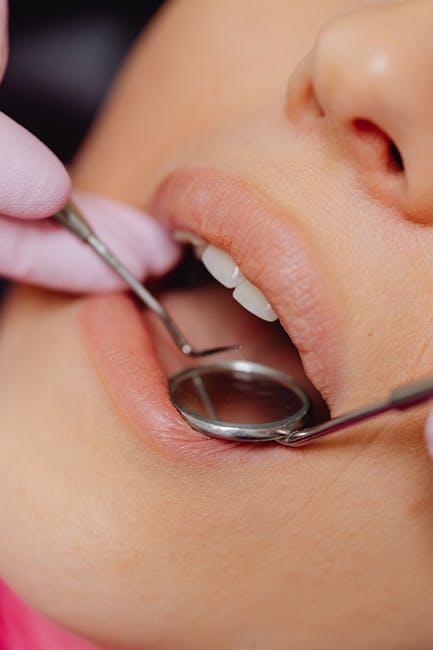
Emergency Dental Visits Take A Bite Out Of Everyone’s Wallets – Texas A&M Today
When dental crises strike, the immediate pain is often only half the problem. Emergency dental visits can widely vary in cost—and often, they leave patients and families facing unexpected financial burdens. Recent studies, including research highlighted by Texas A&M Today, shed light on how emergency dental care expenses are affecting individuals across Texas and the nation. This comprehensive article delves into the causes, costs, and practical strategies surrounding dental emergencies, empowering you to make informed decisions when the unexpected happens.
Understanding Emergency Dental Visits
Dental emergencies encompass a range of urgent oral health issues that require prompt professional intervention. Common scenarios include severe toothaches, cracked or knocked-out teeth, infections, and trauma to the gums or mouth. Unlike routine dental appointments, emergency visits demand immediate attention to relieve pain, prevent infection, and preserve oral function.
Common Causes of Emergency Dental Visits
- Trauma or Accidents: Sports injuries, falls, or car accidents causing chipped, broken, or lost teeth.
- Severe Tooth Decay: Untreated cavities progressing to abscesses requiring urgent treatment.
- Wisdom Teeth Complications: Painful impactions or infections during eruption.
- Gum Infections: Swelling, pain, or bleeding from periodontal disease exacerbations.
- Dental Procedures Gone Wrong: Dislodged crowns, bridges, or fillings needing repair.
The Financial Impact: How Emergency Dental Care Affects Wallets
Emergency dental care tends to be significantly more expensive than scheduled dental visits due to the immediacy and complexity involved. According to data reported by Texas A&M Today and corroborated by dental cost analyses, the average cost for an emergency dental visit can range from $150 to $800 or more, depending on the treatment required.
| Emergency Procedure | Average Cost (USD) | Description |
|---|---|---|
| Dental Exam & X-rays | $150 – $250 | Initial diagnosis and imaging. |
| Tooth Extraction | $200 – $600 | Removal of severely damaged or infected teeth. |
| Root Canal Treatment | $500 – $900 | Removal of infected pulp within the tooth. |
| Emergency Filling | $100 – $300 | Repair of cavities or minor fractures. |
| Antibiotics & Pain Management | $50 – $200 | Medication to control infection and alleviate pain. |
Besides direct treatment costs, emergency dental visits may also incur added expenses such as after-hours fees, specialist referrals, and follow-up care. These costs, accumulated unexpectedly, can cause financial strain even for those with insurance.
Insights from Texas A&M Research
Texas A&M University and its dental health researchers have explored the extensive effects of dental emergencies on the public health system. Their findings highlight:
- Increased ER Visits: Many patients visit hospital emergency rooms for dental pain, often because of lack of regular dental care or insurance, leading to higher overall healthcare costs.
- Insurance Gaps: Dental emergencies are less frequently covered by medical insurance, placing a bigger financial burden on patients.
- The Cost-Prevention Link: Preventative dental care can significantly reduce the incidence of emergency visits, benefiting both patients and the healthcare system.
Practical Tips to Manage and Prevent Emergency Dental Costs
While dental emergencies are sometimes unavoidable, taking proactive steps can minimize financial stress and oral health risks.
1. Maintain Routine Dental Care
Regular check-ups and professional cleanings can catch problems before they require emergency intervention.
2. Know Your Insurance Coverage
Review your dental and medical insurance policies. Understanding what is covered helps to anticipate out-of-pocket expenses ahead of time.
3. Keep an Emergency Dental Fund
Setting aside a small savings fund specifically for unexpected dental care can ease the financial impact.
4. Utilize Preventative Measures
- Wear mouthguards during sports
- Practice good oral hygiene at home
- Avoid hard or sticky foods that damage teeth
5. Seek Prompt Care
Address dental pain or minor issues early on to prevent escalation into emergencies.
First-Hand Experience: Managing a Dental Emergency in Texas
Jessica, a Texas resident, shares her story about facing an unexpected dental emergency:
“I cracked a tooth during a family volleyball game and had to rush to an emergency dental clinic. The cost was over $600 for extraction and follow-up treatment. Since I didn’t have dental insurance, it was stressful managing the bill alongside my monthly expenses. Now, I’m much more diligent with my regular dental visits and keep a separate savings for these kinds of emergencies.”
Jessica’s experience is a reminder that dental trauma can happen anytime, and financial preparedness is key to coping with the aftermath.
Conclusion: Taking Control of Your Dental Health and Finances
Emergency dental visits can indeed take a sizable bite out of everyone’s wallets, but with awareness, preventative care, and financial planning, the burden can be significantly reduced. Insights from Texas A&M research emphasize the importance of routine dental care and broader insurance coverage to ease the financial weight of dental emergencies.
By staying informed and proactive, you can protect both your smile and your budget from the surprises that dental emergencies may bring.
For more updates and research on dental health and other public health topics, keep following Texas A&M Today.


